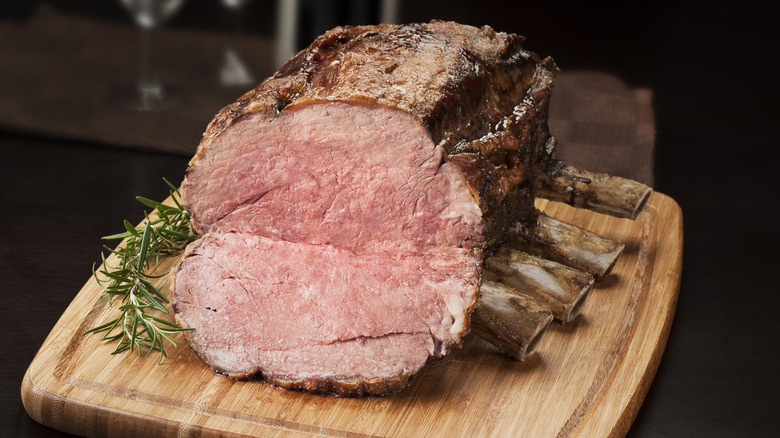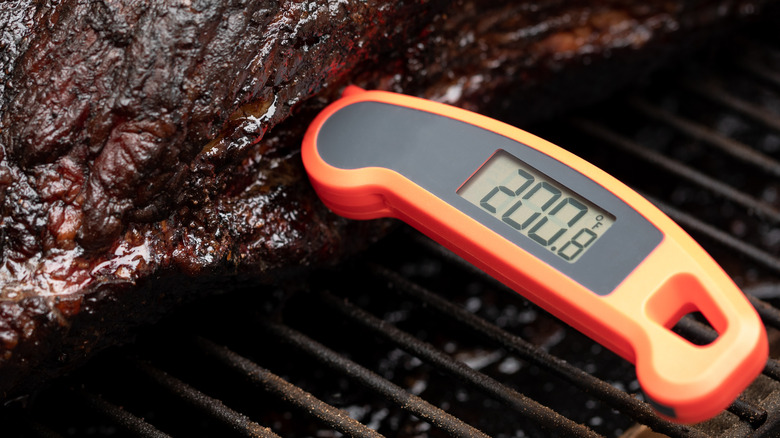How To Make Prime Rib At High Altitude
Prime rib is an expensive and desired cut of beef. While it is not difficult to cook, it can nevertheless be intimidating. The pressure comes in the form of fearing that, somehow, you'll mess it up. And while nearly every recipe you read will give you the exact steps you'll need to cook your prime rib to perfection, those living at high altitudes will need to adjust.
In cooking, high altitude is considered anything above 2,500 to 3,000 feet above sea level. While some recipes will have notes on adjustments, most recipes are written with sea-level times and temperatures. High altitude changes the nature of cooking because the atmosphere is far drier, and there is less oxygen and atmospheric pressure. This means that the boiling point of water is lowered a single degree per 500 feet from the sea level point of 212 degrees Fahrenheit. Food, therefore, requires cooking for longer times at lower temperatures.
What does this mean for prime rib? Well, as meat is 75% water, you are going to have to cook the steak longer and keep an eye on its internal temperature to keep it from drying out.
The meat thermometer is your friend
Despite oven temperatures not being subject to altitude changes, turning up the temperature won't cook your prime rib any faster because water cannot exceed its own boiling point. Nevertheless, you must keep an eye on your prime rib as it's roasting away. Depending on the size of the roast, the prime ribs will sit in an oven at 325 degrees Fahrenheit and cook for around 12 minutes per pound. As these are sea level timings and temperatures, you might need to extend the cooking for an unspecified amount of time. This is where the meat thermometer comes in handy.
Having a meat thermometer is essential for living at higher altitudes. Owing to the fact that the steak will potentially take up to ¼ of the amount of cooking time it would at sea level, you need to keep an eye on the internal temperature so you don't under or overcook the meat. You're looking for an internal temp of 130 and 135 degrees for medium rare. You should check the temp halfway through cooking and then again every few minutes or so. A wireless probe thermometer would work well here.
All told, making prime rib at higher altitudes is not much different than cooking it at sea level. So long as you make the right adjustments, are patient, and are attentive toward your steak, there is no reason it should turn out the worse for wear.

